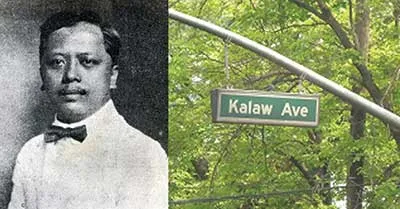TM Kalaw: Knowing the Batangueño of the Common Street Name
Even in my trips to cities in the Visayas and Mindanao in the past, it was not uncommon to see a street or side street that was named TM Kalaw or just Kalaw. Lipa born and raised that I am, I have always suspected that the man after whom these streets are named must have been from Batangas. The surname is common enough in the province and even more so in the City of Lipa.
But just who, even among Batangueños in the present day, knows the man after whom these streets are likely named? Even I only just bothered to find out just now.
TM Kalaw was Teodoro Manguiat Kalaw, born 31 March 1884 in Lipa City. Anyone from hereabouts instantly recognizes that his middle name is also a common enough Batangas or even Lipa surname.
According to Jorge Mojarro, Kalaw was still a teenager when he first became interested and involved in journalism while still living in the then-town of Lipa. After finishing his basic schooling, he left Lipa for Manila to study law at the Escuela de Derecho.1
The Escuela de Derecho de Manila was founded in 1899 by Don Felipe Calderon, remembered in history as one of the authors of the so-called Malolos Constitution of the First Philippine Republic.2 It was the forerunner of what is presently known as the Manila Law College3.
While still a teenager, he started to build a collection of documents on the Philippine Revolution against Spanish colonial rule. These included the writings of the famous Batangueño revolutionary Apolinario Mabini as well as records of the trial of Andres Bonifacio.4
At the age of 23 and still a law student, Kalaw was convinced by his mentor Fernando Maria Guerrero to start writing for El Renacimiento, a Spanish language newspaper with anti-American leanings published in Manila. Most of his best work, wrote Mojarro, were written in Spanish.
Still only aged 26, he accompanied Manuel L. Quezon on a trip across the Eurasian continents to attend an international conference at St. Petersburg in Russia. Years later, Quezon would become President of the Philippine Commonwealth Government from 1935 to 1944.5
The travel across two continents during an era of ethnic oppression by so-called World Powers such as Russia allowed him to see, Mojarro wrote, “The certainty of an existing link between religious fanaticism and ignorance, liberalism as the only set of political ideas that could bring freedom and prosperity to the country, and the need to build a constitution – from out of the US oppression – that would allow the set-up of rules for the development of the life of all Filipinos.”
Kalaw was in a unique position in that he had an innate passion for documents and was, therefore, something of a born historian. He also had a law background which also helped him to analyze and understand the political environment of his time. Above all, he was an accomplished writer who could put pen to paper in Tagalog, English and Spanish.
He was so prolific that, according to Kahimyang.com, the historian Teodoro Agoncillo regarded the years 1900-1940 as the “Age of Kalaw.” Most of these writings were political or historical in nature, such as his analysis of the Malolos Constitution contained in the 1910 book “La Constitución de Malolos” and the “Teorías Constitucionales” two years later.
Among his other works were biographies of Filipino heroes along with historical accounts of the Philippine Revolution. He also edited some of the works of the National Hero Jose Rizal and Mariano Ponce, who was among the founders of the revolutionary paper La Solidaridad.
Kalaw was a member of the Grande Oriente Español, the oldest traditional masonic organization in Spain.6 He joined the movement in 1907 and was elected Grand Master of the Grand Regional Lodge of the Philippines at the age of 31.7 Because of his masonic connections, he was also able to write the history of masonry in the Philippines up to his time.
Although he also once occupied the position of Undersecretary of the Interior during the American colonial era, in truth he was also critical of American occupation and preferred the building of a modern Philippine nation guided by a well-written constitution based on liberal principles.
Kalaw was also twice Director of the National Library and is credited with its modernization. He is regarded in some quarters as “The Father of Philippine Libraries.”
Later in his life, Kalaw would lose one leg from what started as a foot infection but which eventually became severe that the entire leg had to be amputated.8 He would die in 1940 at the age of 56, still relatively young but at least, he was spared the ravages that World War II would subsequently bring.
He is immortalized around the country by countless street posts, but now we know more the man about whom the signage is: a great Batangueño intellectual, writer, political analyst, historian and, above all, patriot.
2 “Felipe Calderón (Filipino politician),” Wikipedia.
3 “About Manila Law,” online at the Manila Law College web site.
4 “Today in Philippine History, March 31, 1884, Teodoro M. Kalaw was born in Lipa, Batangas,” 2012. Online at Kahimyang.com.
5 “Manuel L. Quezon,” Wikipedia.
6 “Grande Oriente Español,” Wikipedia.
7 “Kalaw's fight for Philippine Masonic sovereignty,” by Nicolas G. Ricafrente, online at the Philippine Center for Masonic Studies.
8 “The Cry of the Dying Medicine Man: The Biography of Major Pedro Nosa Halili,” by O’NE, 2016.


